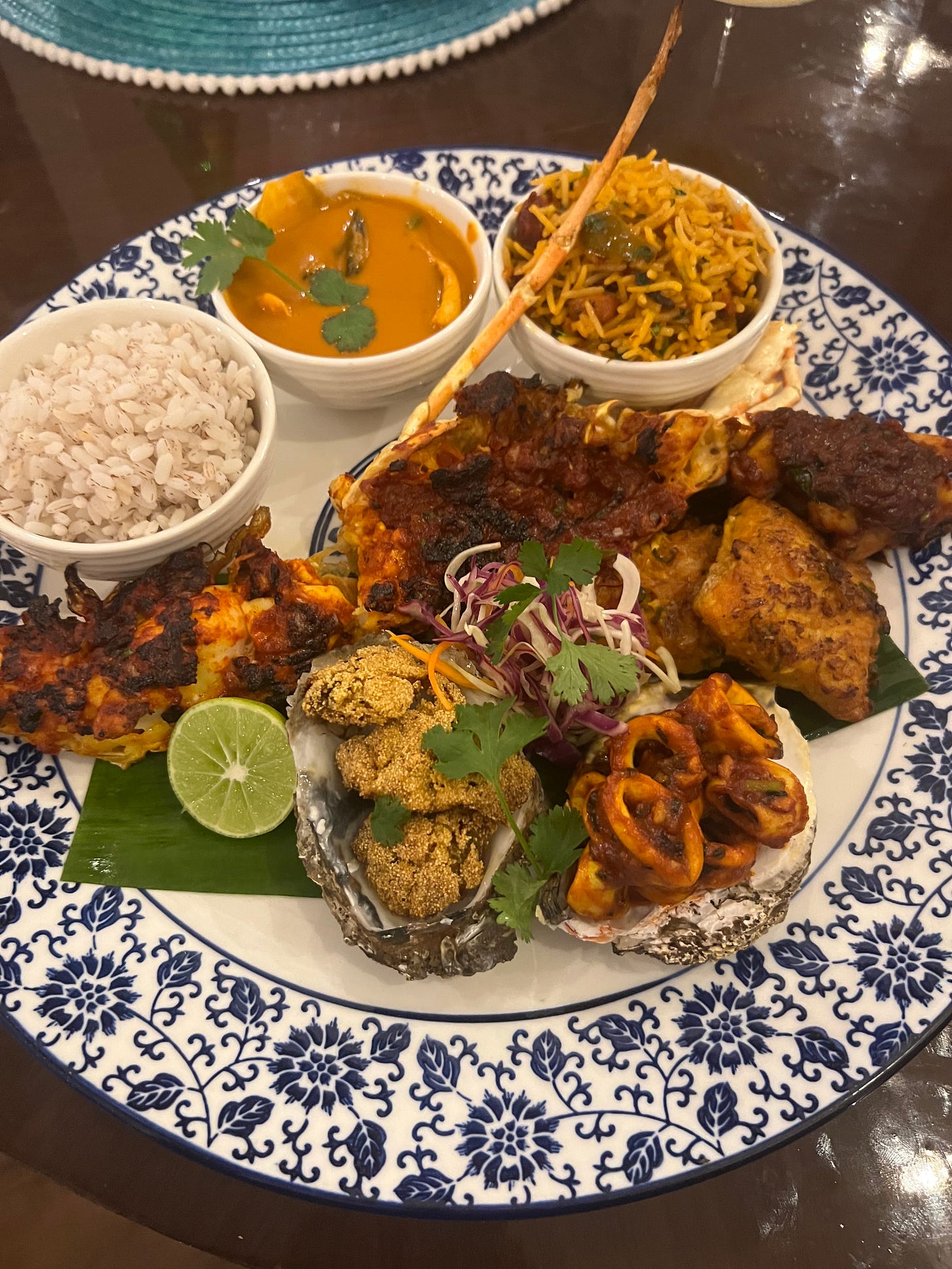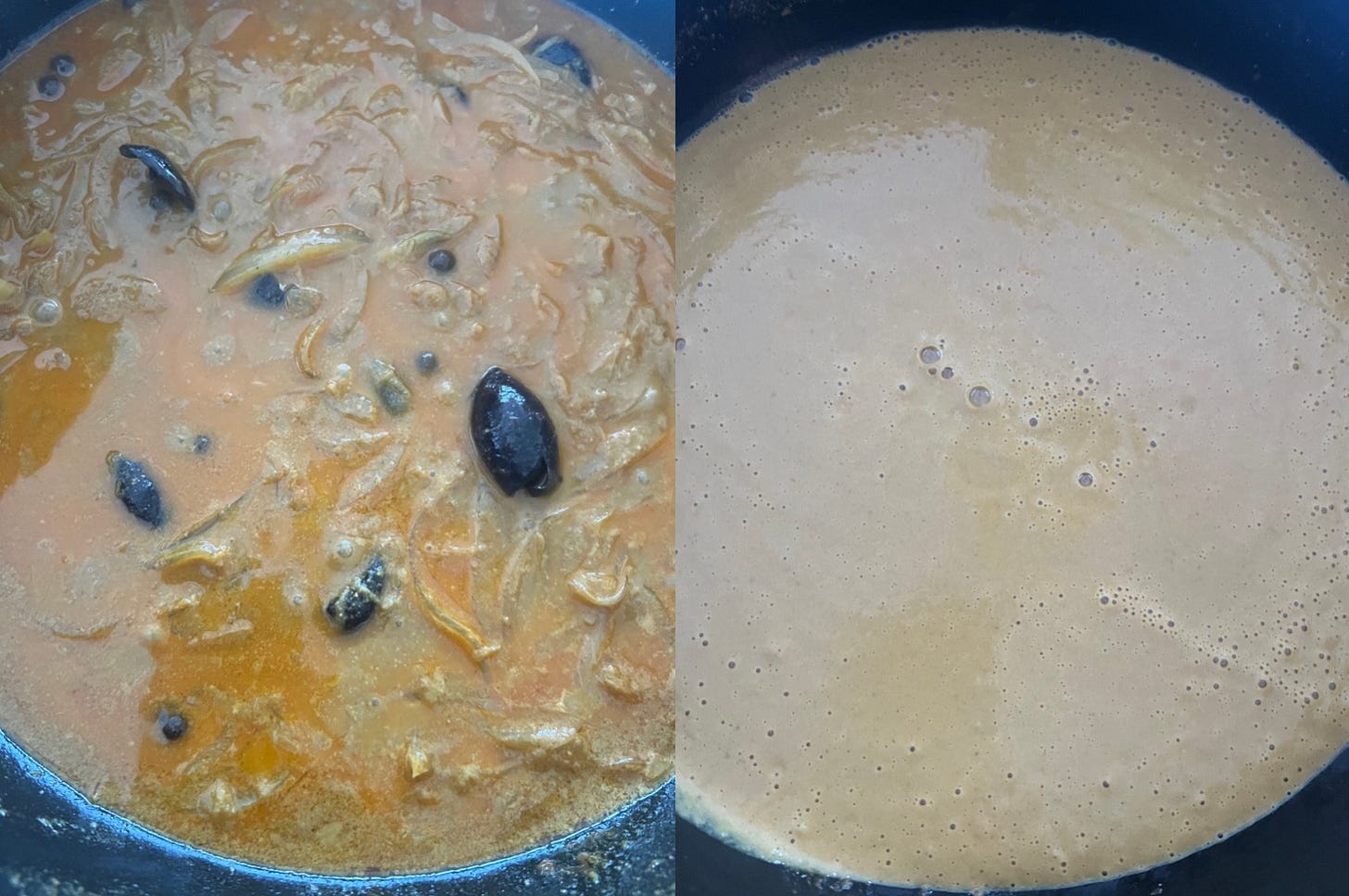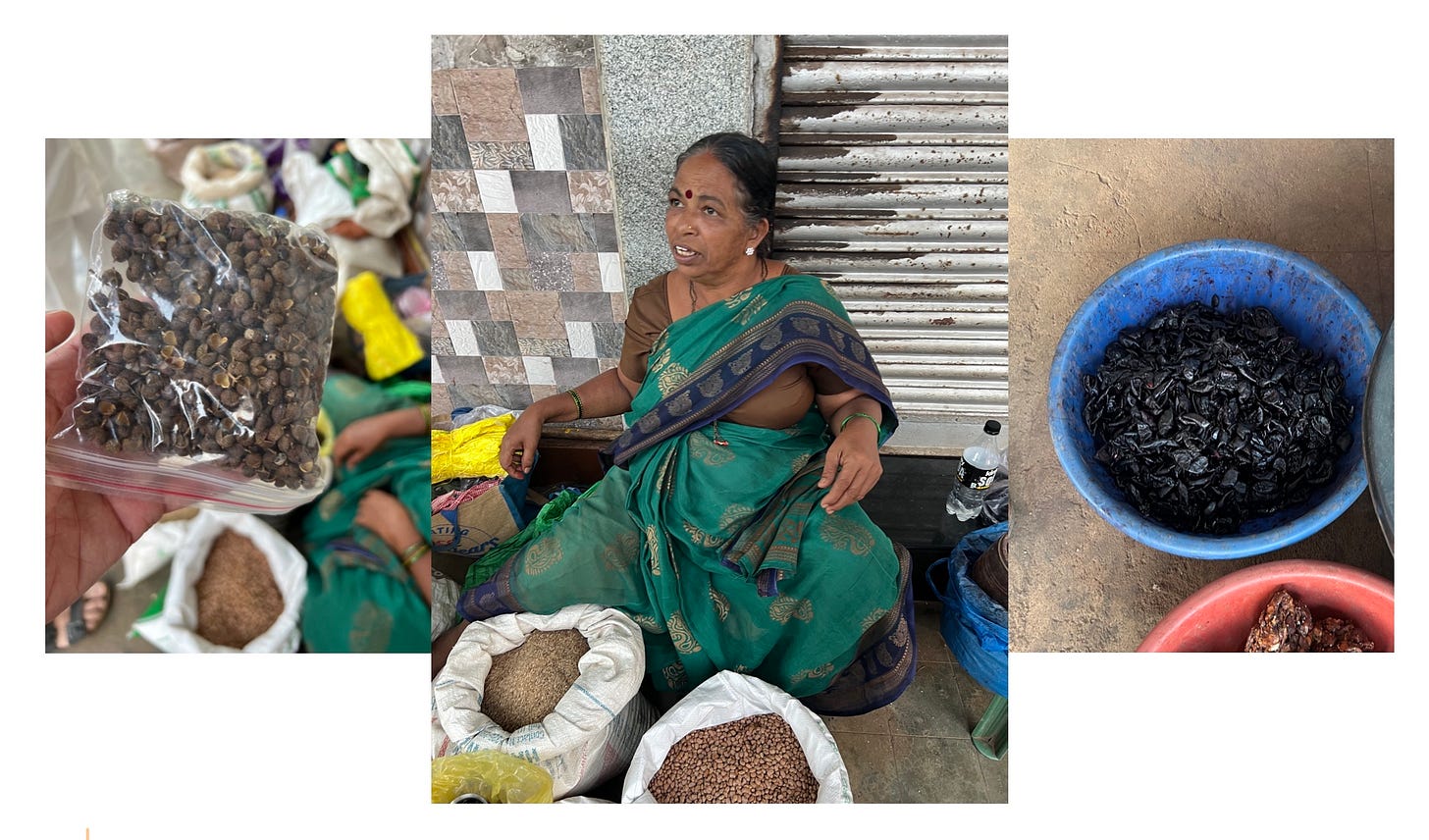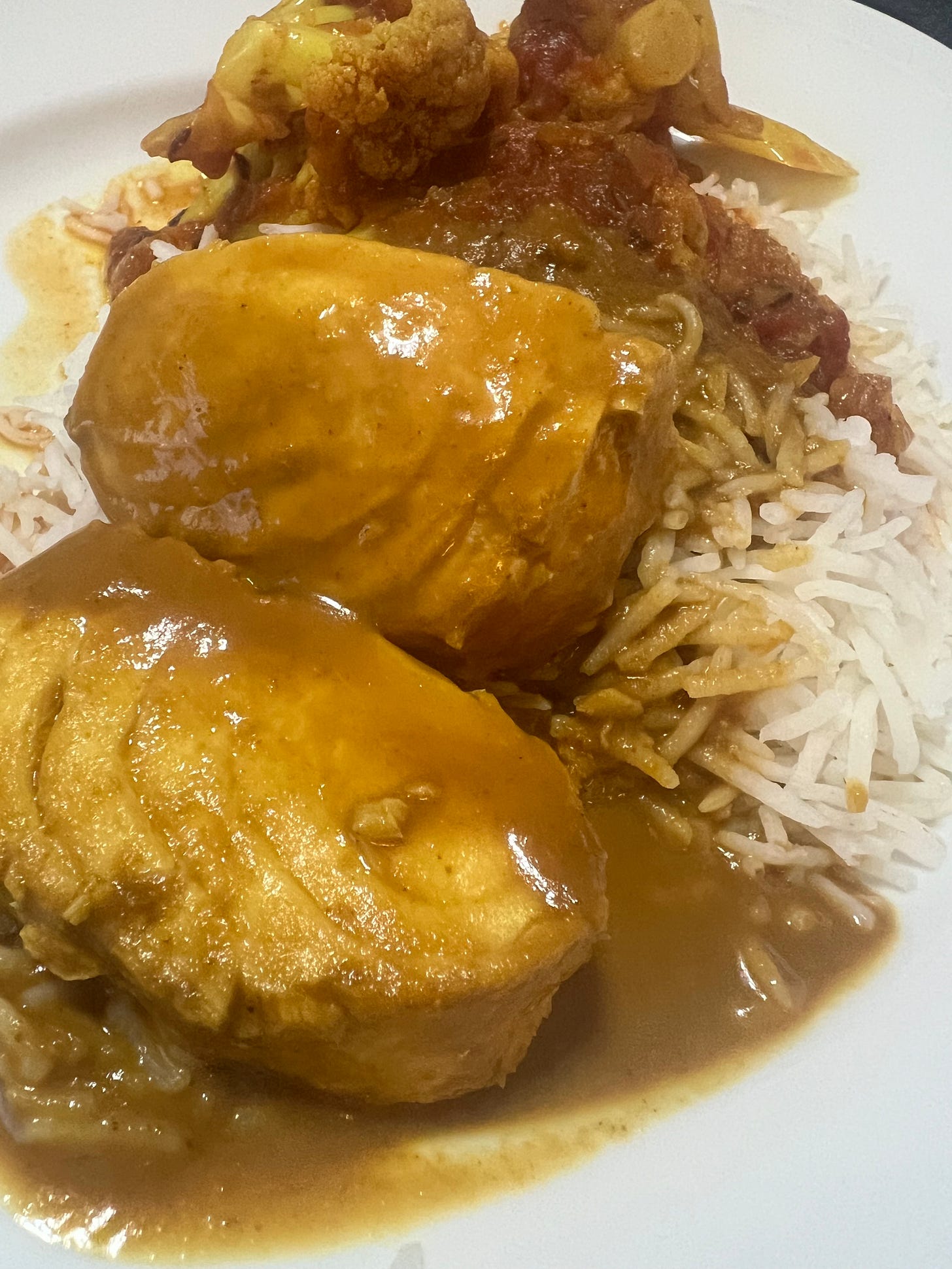Issue #152: Goan Fish Curry
A Scavenger Hunt in a Goan Market, Some Proud Chefs, and My Re-creation of a Local Dish at Home
Ever since we returned from India in February, I’ve been playing around with Goan Fish Curry.

As with most international cuisines, we tend to think of Indian food as a monolith of what we find in local restaurants. That leaves many believing Indian food comprises little more than the rich, heavily spiced curries and creamy dals that are typical of Mughal cooking and that have been exported and often bastardized in Indian restaurants around the world. But it should come as no surprise that the reality on the ground in the world’s most populous country with a rich history that dates back millennia is quite different. The incredible variety and regionality of food across India cannot be overstated. And the lightness and freshness of the food we had as we traveled around was remarkable, especially in comparison to the Indian buffet steamtables back home.
Chefs and restaurateurs like my friends Chintan Pandya and Roni Mazumdar of Unapologetic Foods in New York City (whose restaurants include Dhamaka, Semma, and Masalawala & Sons) and Anita Jaisinghani of Pondicheri in Houston have done a lot to widen our perspective on Indian cuisine. When Roni and Chintan created the menu for Dhamaka, they gave themselves the challenge of not serving anything you would find on the menu of any other Indian restaurant in the city. Anita uses ingredients local to Texas, her knowledge of Ayurvedic principles, a passion for sustainability, and a global culinary sensibility to create a personal, plant-forward, Indian-inflected cuisine.
Some of our favorite food on our India tour was in Goa, where the seaside climate and Portuguese influences give regional cooking its unique qualities. Anita directed us to one of our favorite restaurant meals, a place called Tamil Table in Asagaon, Goa. Even though several dishes were deep fried—reflecting the influence of the Portuguese, who brought the technique of deep frying with them around the world—everything was light, fresh, and delicious.
And then there is Goan Fish Curry.
Goan Fish Curry is one of the few regional Indian dishes that has crept into the international canon of Indian cuisine. But the way it is interpreted abroad often has little in common with its culinary antecedent in the region.
It was our friend Reena, back in NYC, who let me in on a couple of secrets to Goan Fish Curry. In fact, she sent us on a scavenger hunt that brought us to the Municipal Market in Mapusa, where locals helped us find two key ingredients that make the local curry so delicious.
The first is teppal, a citrusy bud that’s referred to as a “pepper,” but that is not at all related to the ubiquitous black pepper or other spices that come from the Piper genus. Rather it is a cousin of Sichuan peppercorn, which is the bud of the prickly ash, genus Zanthoxylum. A little larger and without the numbing quality of Sichuan pepper, teppal gives the flavor of Goan Fish Curry its complex top notes.
The second ingredient is kokum, a fermented and dried fruit related to mangosteen that has a deep, funky, sour flavor reminiscent of tamarind. The kokum from Goa is particularly strong and has a supple, semi-dried texture. I could smell it through two plastic bags from inside my suitcase as we continued our travels in India. When I posted a picture of the kokum we found in the Mapusa market, chef Sara Jenkins of Nina June in Rockport, Maine, commented that because of its complex flavor she has always thought kokum would become the next big thing among chefs. I don’t disagree.
On our last night in Goa, the chefs of the Taj Fort Aguada Resort where we were staying wanted to prepare a variety or regional Goan dishes for us to try. Their fish curry was the most refined we encountered, rich and flavorful, but with a delicate texture, almost creamy. (When she saw the photo on Instagram, Reena noted how difficult it is to achieve this texture.)
Once home, I began experimenting with Goan Fish Curry. I made several versions using the teppal and kokum I brought back with us from Goa. I set out to re-create that same taste with ingredients that were easier to find. For the teppal I used some green Sichuan peppercorn, a little milder than red and preferred with fish in Sichuan, but not enough to invoke its numbing quality. For kokum I substituted some tamarind concentrate for tartness and a little funky honey (chestnut or buckwheat) to add the complexity of the fermented fruit. I’ve tried a classic masala technique, starting by roasting whole spices and using shredded coconut, and also a quicker version with ground spices and coconut milk. The latter was still pretty great. Once the shopping is done, the curry is quick and easy. The results passed Nate’s “I don’t like fish” test. He licked the plate clean.
My Goan curry recipe attempts to recreate that one we had at the Taj. First, I make a flavorful curry base and then I purée it in a blender to make a light, smooth gravy or sauce. In that sauce I poach whatever fish I can find locally. I’ve been using halibut lately and occasionally shrimp. I’ve used leftover sauce to cook more fish a second time. Serve your Goan fish curry with plenty of steamed basmati rice to soak up that delicious sauce.
RECIPE: Mitchell’s Goan Fish Curry
1 1/2 pounds fresh white-fleshed fish fillets or medallions, skin and bones removed, or a combination of fish and shrimp, peeled
Sea salt
2 tablespoons coconut oil
1 large onion, thinly sliced (about 1 1/2 cups)
4 large cloves garlic, grated on a Microplane to a paste, or minced
8 teppal (aka tirphal) berries or green or red Sichuan peppercorns
1 1/2 teaspoons ground coriander
2 teaspoons Kashmiri chili powder or other mild red chili powder
1/2 teaspoon ground turmeric
1 cup fresh, frozen, or canned coconut milk
1 cup fish or vegetable stock, kombu dashi, or water
1 teaspoon tamarind concentrate
4 or 5 pieces of kokum (aka kodampuli) or an additional ½ teaspoon tamarind concentrate plus 1 teaspoon chestnut, buckwheat, or other funky honey
Salt the fish and set in the refrigerator. Heat a large casserole or Dutch oven with the coconut oil over medium heat. Add the onion and 1/2 teaspoon of salt and cook until the onions are soft and translucent, about 7 minutes. Add the garlic and stir for a minute to heat. Add the teppal or Sichuan peppercorn, coriander, chili powder and turmeric and cook another minute or so to warm the spices. Add the coconut milk and about ¾ cup of the stock or water and bring to a simmer, stirring, so it doesn't scorch. The coconut milk may separate, but that’s okay. Add the tamarind concentrate and kokum (or additional tamarind and honey), cover, reduce the heat, and simmer for 20 minutes until fragrant, rich and soft. If it gets too thick, add some more water or stock, or coconut milk. At the end of the simmer, remove all the kokum pieces, if using, and set aside. Transfer the curry to a strong blender and purée until creamy and smooth. Return to the pan.

Bring to a simmer. If very thick, add a little more stock or water. Add the fish fillets along with the reserved kokum, if using. Cover and let cook about 7 minutes until the fish is cooked through. Serve with plenty of steamed basmati rice to soak up the gravy.







I prepared the Sichuan Eggpland dish from one or two weeks ago. I had to wait for the items I ordered from Amazon to arrive. It was delicious and it was a bit hit for dinner. Thank you.
That makes me so happy!!!